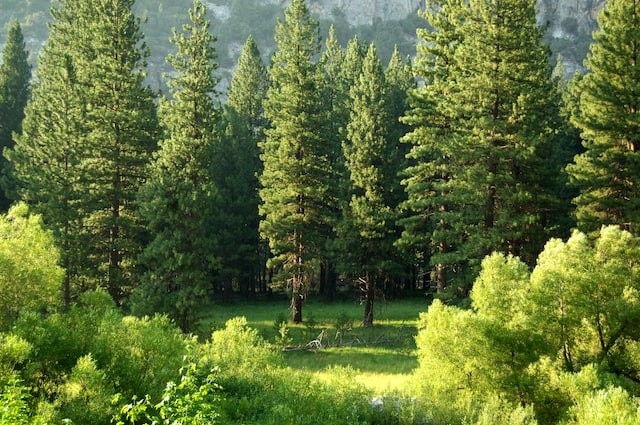Even our most renowned woody species are in serious jeopardy, from soaring coastal redwoods to dinosaur-era Wollemi pines and firs that form the perfect Christmas trees.
According to a new study, the extinction of some species threatens whole ecosystems rather than simply particular woods.
Scientists researching the world's trees issue a dire warning to humanity
 (Photo : Matt Artz/Unsplash)
(Photo : Matt Artz/Unsplash)

A global study titled "State of the World's Trees" published last year discovered that one-third of all tree species are present on the verge of extinction as per Science Alert.
This equates to around 17,500 endangered tree species.
This is more than double the total number of endangered tetrapods (mammals, birds, amphibians, and reptiles).
Some trees are so uncommon that just one known individual exists, such as Mauritius' lonesome pine, Hyophorbe amaricaulis.
The same team of academics behind the State of the World's Trees studies sends a "warning to mankind" about the repercussions of these losses in a new publication, supported by 45 additional experts from 20 nations.
Malin Rivers of Botanic Gardens Conservation International and her colleagues detail the numerous effects these losses will have on our economy, livelihoods, and food.
The majority of our fruit comes from trees, as do many nuts and pharmaceuticals, with non-timber items accounting for around $88 billion in commerce.
880 million people in the developing world rely on firewood for fuel, and 1.6 billion people live within 5 kilometers (3 miles) of a forest, relying on it for food and revenue.
Overall, trees contribute around US$1.3 trillion to the global economy each year, yet we kill billions of them every year, clearing vast swaths of land for farming and construction.
Trees are their microcosms, teeming with single- and multicellular living forms such as other plants, fungus, bacteria, and animals.
When a tree dies, the entire world dies with it. They frequently serve as the foundation for the entire web of life that surrounds them.
Loss of variety, as with all living systems, makes the entire web of living relationships more susceptible.
This is because less variety implies less diversity in immune response, genes, and reactions to environmental circumstances, which means fewer odds of surviving the numerous dangers that hammer the intricate web of interconnections that is the human body.
Even if a species is already uncommon, the extinction of a single species can have a significant domino impact on everything else that interacts with it.
Species that rely on our depleting forests have already dropped by around 53% since 1970, and more forests across the world are displaying indications of stress.
This affects more than simply the different forms of life with which trees interact.
Trees are also intertwined with the Earth's soil, atmosphere, and weather, cleansing the air, creating oxygen, and causing rain.
They hold three-quarters of the world's available freshwater and more than half of its harmful carbon dioxide.
A few tree species, such as those migrating into fire-cleared land, are getting lucky and taking advantage of the fast-environmental changes we've made.
Much work has to be done on a communal basis to address this, but we can all help by recognizing the value of trees and combating our plant blindness.
Researchers noted earlier this year that fewer people than ever are pursuing botanical education in the UK, even though we need plants more than ever.
Also Read: North American Birds Still Not Fully Adjusted Due to Climate Change, New Study Finds
Climate Change And Trees
Trees absorb and sink carbon that would otherwise contribute to global warming as they grow.
Trees (and all plants) use solar energy to perform photosynthesis, a process that converts carbon dioxide and water into energy (glucose) for their cells, as per youmatter.
Finally, trees end up feeding themselves with the carbon we badly need to keep from entering the environment.
Trees help the soil capture and store carbon in addition to absorbing carbon dioxide.
Despite not doing as well as the seas in absorbing roughly 90% of all carbon emissions and subsequently experiencing the consequences of ocean acidification, trees are highly crucial in combating climate change.
Several scientists examined the worldwide tree cover status in the global tree restoration potential research published in the journal Science.
They measured tree cover using 80,000 high-resolution Google Earth satellite pictures, which they then combined with soil, terrain, and other climatic factors using AI.
As a consequence, a worldwide map showing where additional trees may be planted to help combat climate change was created.
According to the same study, there is room for another 0.9 billion acres of canopy cover to be grown, which would store 205 gigatonnes of carbon.
To paraphrase the authors, we can regard global tree restoration as one of our most successful climate change responses to date.
A study performed by Stanford University and the University of Barcelona experts also highlighted plants' potential to continue to absorb carbon dioxide from the environment.
Despite warnings that as CO2 concentrations grow, particular attention must be paid to the soil's nitrogen and phosphorus balance, the study also suggests that trees have a huge potential to help avert climate change.
Related article: Researchers Discovers Importance of Carbon Cycle in Predicting Climate Change
© 2024 NatureWorldNews.com All rights reserved. Do not reproduce without permission.



![Roundworms with Short Memories 'Stop Forgetting' When Frozen or Given Lithium [Study]](https://1471793142.rsc.cdn77.org/data/thumbs/full/70295/280/157/50/40/roundworms-with-short-memories-stop-forgetting-when-frozen-or-given-lithium-study.jpg)

